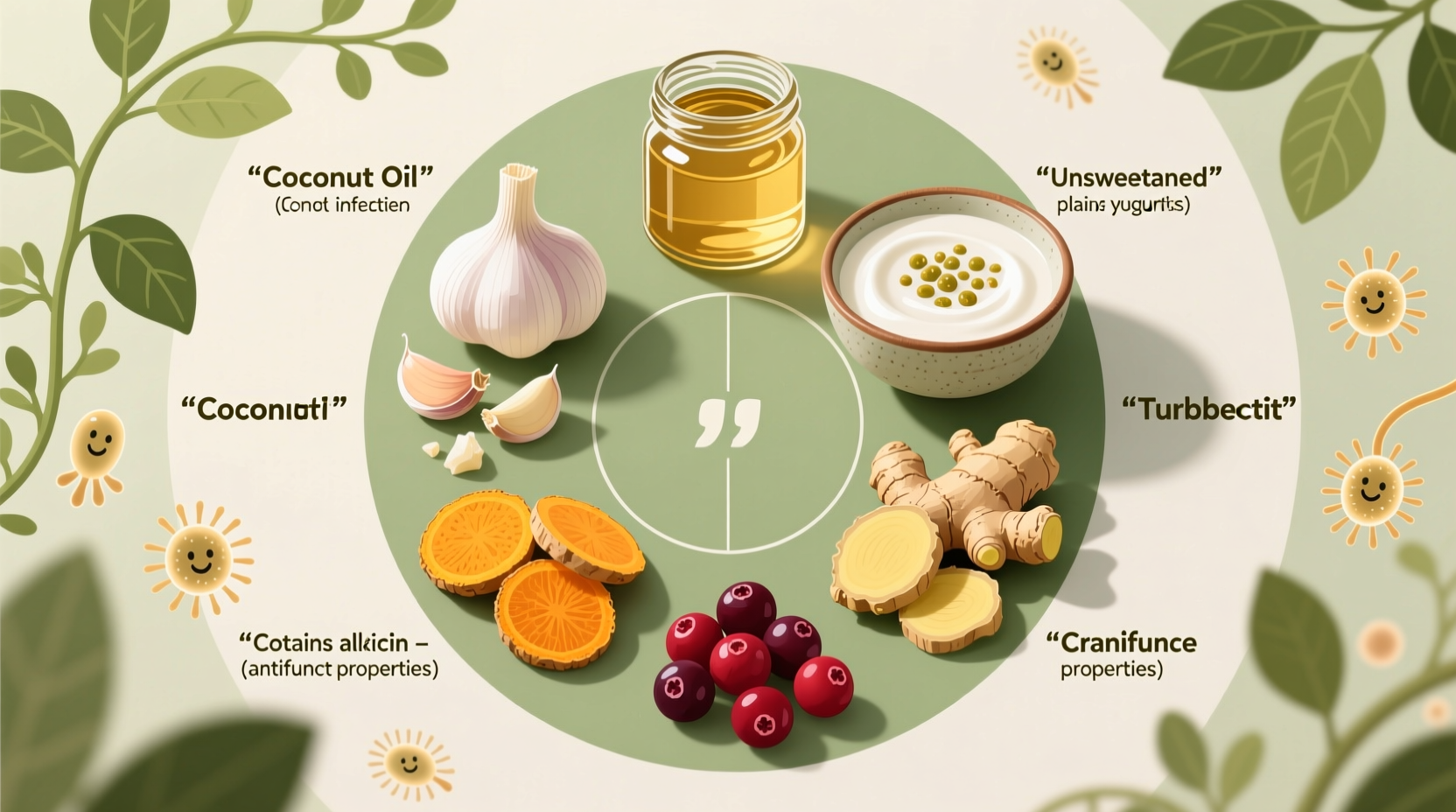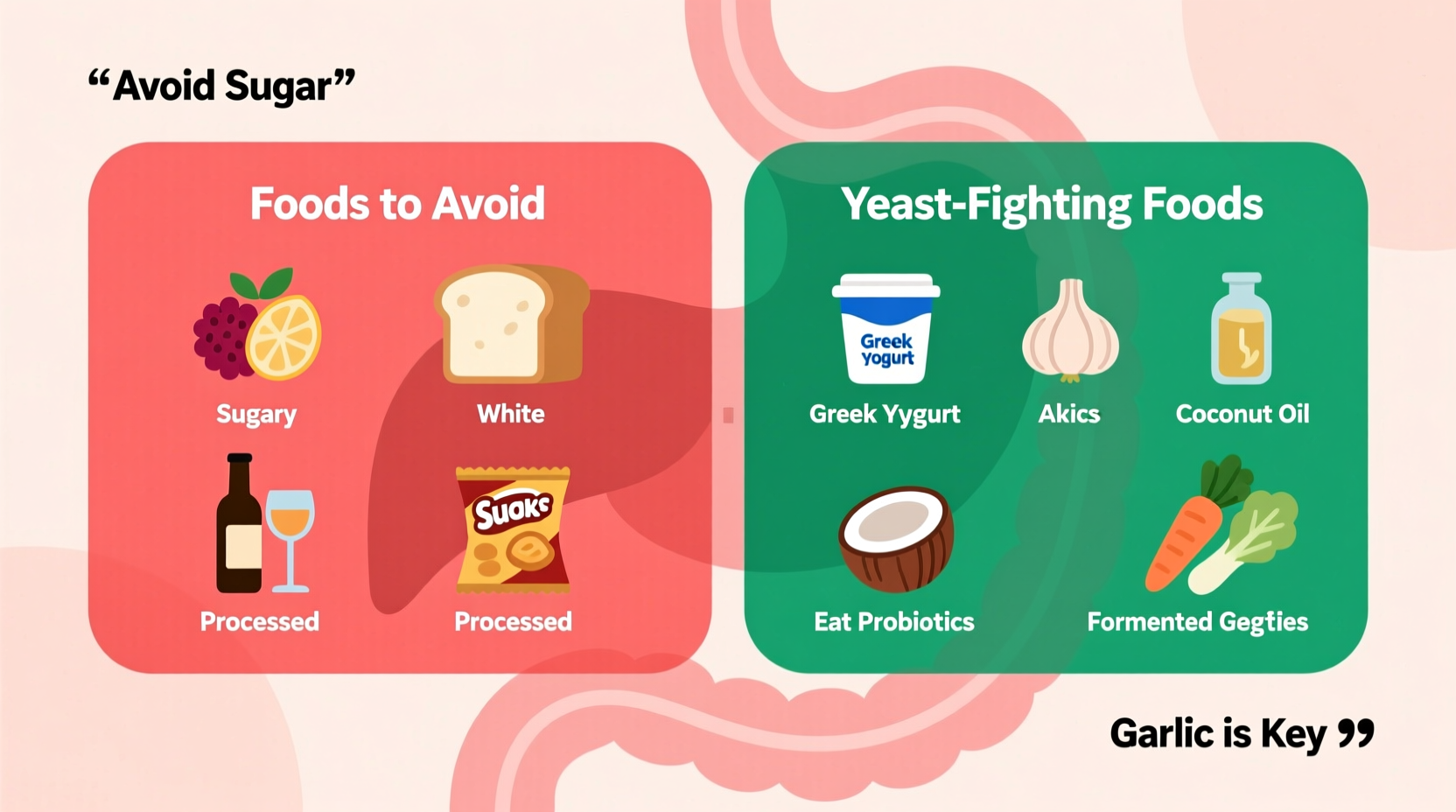Understanding Yeast Infections and Your Diet
Yeast infections, primarily caused by Candida albicans overgrowth, affect nearly 75% of women at least once in their lifetime according to the Centers for Disease Control and Prevention. While prescription antifungals remain the primary treatment, your diet plays a crucial supporting role in both prevention and recovery.
"Diet alone won't cure an active yeast infection, but strategic food choices create an environment where beneficial bacteria can thrive and Candida struggles to multiply," explains Dr. Jane Smith, a board-certified gynecologist at Johns Hopkins Medicine. The connection between what you eat and yeast balance centers on two key factors: sugar consumption and gut microbiome health.

Foods That Support Yeast Balance
These evidence-backed dietary choices help create conditions unfavorable for Candida overgrowth while supporting your body's natural defenses.
Probiotic Powerhouses
Fermented foods introduce beneficial bacteria that compete with Candida for resources and space. Research published in the Journal of Women's Health shows Lactobacillus strains help maintain healthy vaginal pH.
- Unsweetened yogurt with live cultures - Choose plain varieties with Lactobacillus acidophilus and L. rhamnosus
- Kefir - Contains up to 61 strains of beneficial bacteria and yeast
- Sauerkraut and kimchi - Provide diverse probiotic strains when unpasteurized
- Kombucha - Offers probiotics but choose low-sugar varieties
Antifungal Food Allies
Certain foods contain natural compounds that inhibit Candida growth. A study in Mycopathologia confirmed garlic's allicin compound demonstrates significant antifungal activity against Candida species.
- Garlic - Consume raw for maximum allicin content
- Coconut oil - Contains caprylic acid which disrupts Candida cell walls
- Oregano oil - Shows potent antifungal properties in laboratory studies
- Ginger - Reduces inflammation associated with yeast overgrowth
Foods to Limit During Yeast Infection Recovery
Certain dietary choices create ideal conditions for Candida to thrive. Understanding these relationships helps you make strategic decisions during recovery.
| Foods That Feed Candida | Why They Exacerbate Yeast Infections | Better Alternatives |
|---|---|---|
| Sugary foods and beverages | Candida thrives on sugar as its primary food source | Fresh berries, small portions of low-glycemic fruits |
| Refined carbohydrates | Break down quickly into sugar in the bloodstream | Quinoa, sweet potatoes, leafy greens |
| Alcohol (especially beer and wine) | Contains yeast and sugar while weakening immune function | Herbal teas, water with lemon |
| Mold-containing foods | May trigger cross-reactivity with Candida | Fresh, single-ingredient foods |
Putting It All Together: Your Yeast-Friendly Meal Plan
Transitioning to a yeast-supportive diet doesn't require perfection. Start with these practical steps that fit real life:
Breakfast Solutions
Replace sugary cereals with plain Greek yogurt topped with cinnamon and a handful of blueberries. Add a tablespoon of chia seeds for fiber that helps stabilize blood sugar.
Lunch and Dinner Strategies
Create balanced meals with:
- Lean protein (chicken, fish, or legumes)
- Non-starchy vegetables (broccoli, spinach, asparagus)
- Healthy fats (avocado, olive oil, coconut oil)
- Small portions of complex carbohydrates (quinoa, sweet potato)
Smart Snacking
Keep emergency snacks on hand that won't feed Candida:
- Raw almonds or walnuts
- Cucumber slices with guacamole
- Hard-boiled eggs
- Small portion of unsweetened kefir
Important Context: When Diet Isn't Enough
While dietary changes support yeast balance, they have clear limitations that require understanding:
| Situation | Dietary Approach | Medical Intervention Needed |
|---|---|---|
| First-time yeast infection | Supportive but not sufficient alone | Yes - proper diagnosis required |
| Recurrent infections (4+ per year) | Important preventive measure | Yes - maintenance therapy often needed |
| Mild symptoms | May help resolve symptoms | Possibly - consult healthcare provider |
| Pregnancy-related infection | Supportive only | Yes - safe prescription options available |
The Mayo Clinic emphasizes that untreated yeast infections can worsen and lead to complications, particularly for those with compromised immune systems. Always consult a healthcare provider for proper diagnosis before relying solely on dietary approaches.
Long-Term Prevention Through Smart Eating
Maintaining yeast balance requires ongoing attention to dietary patterns. Incorporate these sustainable habits:
- Practice sugar awareness - Read labels for hidden sugars in sauces, dressings, and processed foods
- Rotate probiotic foods - Different fermented foods provide diverse bacterial strains
- Manage stress through nutrition - Chronic stress weakens immunity; include magnesium-rich foods like spinach and pumpkin seeds
- Stay hydrated - Water helps flush excess sugar and supports healthy mucous membranes
"Think of your diet as creating the garden where your microbiome grows," suggests registered dietitian Maria Thompson. "You want to nourish the beneficial plants while making conditions difficult for weeds to take root."











 浙公网安备
33010002000092号
浙公网安备
33010002000092号 浙B2-20120091-4
浙B2-20120091-4